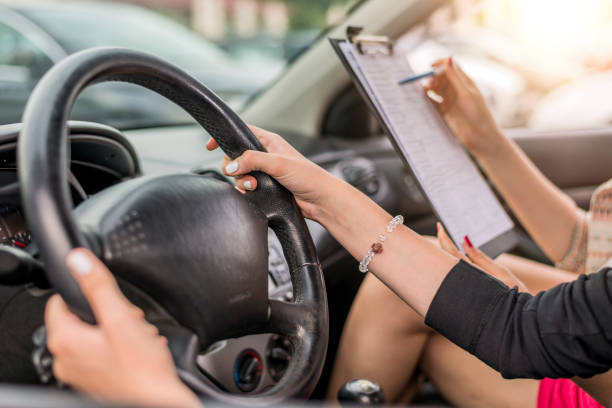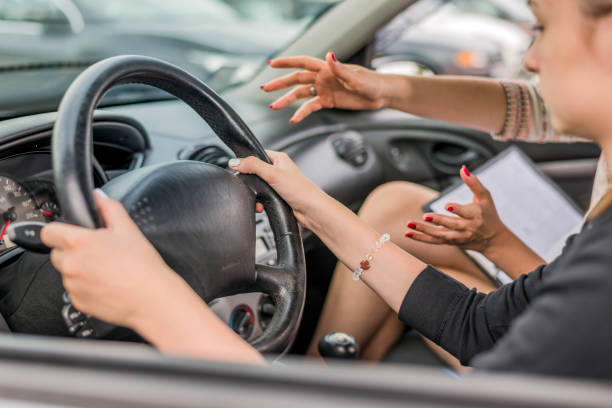Apr 27
/
Amir Iqbal
Step-by-Step Guide to Getting Your CDL License
Step-by-Step Guide to Getting Your CDL License
If you are ready to start a career in trucking, delivery, passenger transportation, or heavy equipment operation, getting your Commercial Driver’s License (CDL) is the first step. The CDL opens up stable, well-paying job opportunities across the country.
The process can feel overwhelming at first, but when broken down into simple steps, it becomes much more manageable.
At OnlineTrafficSafety.com, we make it easy to understand the CDL licensing process and prepare effectively through certified online CDL courses and practice tests.
This step-by-step guide explains exactly how to get your CDL license, what to expect at each stage, and how to move through it quickly and confidently.
Step 1: Understand the CDL License Classes

The first thing you need to know is which CDL class you want to apply for:
- Class A CDL: Allows you to operate combination vehicles (tractor-trailers) with a gross combination weight of 26,001 pounds or more, including towing vehicles over 10,000 pounds.
- Class B CDL: Permits operation of a single vehicle with a GVWR (Gross Vehicle Weight Rating) of 26,001 pounds or more. Examples include dump trucks and large buses.
- Class C CDL: Required for smaller vehicles transporting 16 or more passengers or carrying hazardous materials.
Choosing the correct class upfront is important because it determines which tests and endorsements you will need.
If you are unsure which class fits your goals, our CDL resources can help guide your decision.
Step 2: Meet the Basic Requirements
Before applying for a CDL, make sure you meet the basic eligibility rules:
- You must be at least 18 years old to drive within your state (intrastate) or 21 years old for interstate driving across state lines.
- You must hold a valid, non-suspended driver’s license.
- You must be able to prove U.S. citizenship or lawful permanent residency.
- You must pass a DOT Medical Exam and carry a valid Medical Examiner’s Certificate (Form MCSA-5876).
Many clinics offer DOT physical exams, and it’s wise to complete this early, since you will need it to apply for your learner's permit.
Step 3: Study for and Pass the CDL Knowledge Tests
Before you can take the wheel of a commercial vehicle, you must first earn your Commercial Learner’s Permit (CLP) by passing a series of written knowledge tests.
Here’s how to prepare effectively:
- Study your state's CDL manual (available online for free).
- Focus on General Knowledge, Air Brakes, and Combination Vehicles sections, depending on your license class.
- Take multiple practice tests to reinforce learning.
At OnlineTrafficSafety, we offer online CDL prep courses that break down the material into easy-to-understand lessons, complete with unlimited free CDL practice tests with answers to help you master each topic.
Once you are consistently scoring 85% or better on practice tests, you are ready to take your written exams at your DMV office.
Step 4: Get Your Commercial Learner’s Permit (CLP)
After passing your written exams, you will be issued your Commercial Learner’s Permit (CLP).
The CLP allows you to practice driving a commercial vehicle under the supervision of a licensed CDL holder.
Key things to know:
- You must hold your CLP for at least 14 days before you are eligible to take the CDL skills test.
- Some states may require additional training hours or paperwork during this period.
Use your CLP time wisely by gaining real driving experience through a certified training program or with a qualified driver in your company or community.
Step 5: Complete Entry-Level Driver Training (ELDT)
As of February 7, 2022, federal regulations require that anyone applying for a CDL must complete Entry-Level Driver Training (ELDT) from an FMCSA-approved provider.
This includes:
- Theory Training: Classroom or online instruction covering safe operation, basic control, pre-trip inspections, and more.
- Behind-the-Wheel Training: Practical driving time on public roads and at training facilities.
Our online CDL theory courses meet FMCSA standards, allowing you to complete the classroom portion at your own pace and report your progress automatically to the Training Provider Registry (TPR).
After completing your theory training, you will be qualified to move on to the practical driving test.
Step 6: Prepare for and Take the CDL Skills Test
The CDL skills test is made up of three parts:
- Pre-Trip Inspection: You must demonstrate you can inspect your vehicle before operation, identifying potential safety hazards.
- Basic Vehicle Control Skills: You will be asked to perform maneuvers like straight-line backing, offset backing, and parallel parking.
- On-Road Driving Test: A DMV examiner will observe you driving in various traffic situations.
Prepare by:
- Practicing pre-trip inspections until you can confidently explain every step.
- Mastering backing maneuvers without excessive pull-ups.
- Driving in a variety of traffic conditions to build real-world skills.
Some CDL training programs even offer mock road tests to simulate the real experience. Be sure to use any resources available to sharpen your skills before test day.
Step 7: Submit Final Paperwork and Get Your CDL License
Once you pass the skills test, you are almost there. You will need to return to your DMV office to:
- Complete any remaining paperwork.
- Pay the CDL issuance fee (varies by state).
- Take your CDL photo.
After this, you will be issued your official Commercial Driver’s License. In many cases, you will receive a temporary paper license while your physical card is printed and mailed to you.
Congratulations you are now licensed to operate commercial vehicles professionally.
Extra Steps: Consider Endorsements
Depending on your career goals, you might need additional endorsements added to your CDL, such as:
- Hazardous Materials (HazMat): For transporting dangerous goods.
- Tanker (N): For hauling liquids in bulk tanks.
- Passenger (P): For driving buses or shuttles.
- School Bus (S): Requires additional safety checks and fingerprinting.
Each endorsement usually requires additional written tests, and some (like HazMat) require background checks through TSA.
Our endorsement prep courses make studying for these additional exams much easier, helping you expand your job opportunities even further.
Common Mistakes to Avoid During the CDL Process

Many new drivers delay their licensing unnecessarily by making small but costly mistakes. Here is what to watch for:
- Not studying properly for the written exams.
- Waiting too long to complete ELDT after getting a CLP.
- Failing to prepare for the pre-trip inspection portion of the skills test.
- Showing up on test day with an ineligible vehicle.
- Forgetting required documents for DMV appointments.
Planning ahead and using trusted resources like OnlineTrafficSafety.com can help you avoid these setbacks.
Final Thoughts
Getting your CDL license is a big accomplishment and an investment in your future. With high demand for qualified drivers nationwide, the opportunity is real but it starts with getting licensed properly.
By following this step-by-step guide, staying consistent in your preparation, and using high-quality online training like we offer at OnlineTrafficSafety.com, you can complete the CDL process smoothly and get on the road faster.
Ready to start your CDL journey today?
Enroll in an FMCSA-approved CDL course with OnlineTrafficSafety.com and take the first step toward a rewarding new career.
Who we are
Online Traffic Safety is at the forefront of delivering up-to-date and effective traffic safety training. We believe that informed drivers are safe drivers, and our goal is to equip every individual with the knowledge and skills needed to navigate the roads confidently and safely.
Featured links
Get in touch
-
info@onlinetrafficsafety.com
Connect with us
-
Facebook
-
Twitter
-
Youtube
-
Instagram
-
Linkedin
-
TikTok
Online Traffic Safety © 2025
